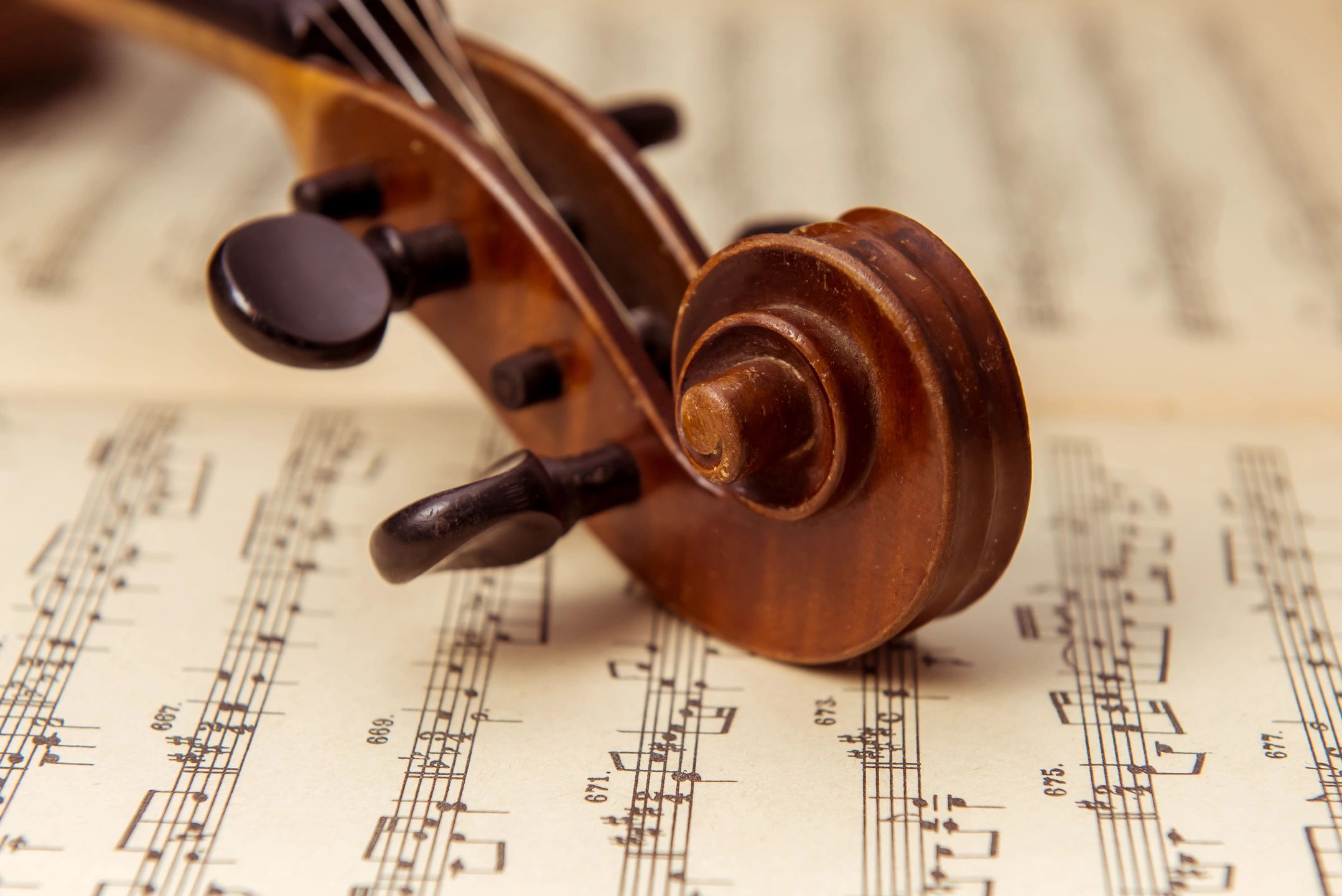The musician bows the strings of his violin resonating notes within its wooden body only because a craftsman shaped, tuned and assembled the instrument in a specific way. The choice of wood, string, and bridge all effect the sound, pitch and quality of music from the instrument. When a skilled musician plays a properly tuned, well-made violin, everyone is in for a treat. But what is resonance and what produces the rich sound from musical instruments that we enjoy so much? Finally, why can we immediately distinguish a violin from a piano playing the same note?
Everything has a natural frequency where things like to vibrate, just blow across the top of an open soda bottle and you will hear its resonant frequency. Flick an empty crystal glass with your finger and it will ring. Resonance occurs when input energy makes molecules vibrate at a specific frequency. Resonance prefers one frequency over others – the coke bottle, the crystal, water molecules and even your enclosed shower stall at home all have preferred frequencies where things vibrate better. Remember when you were a kid and you’d try to pump your legs on the swing-set to go higher? If you pumped your legs at the wrong time you slowed down. Resonance maximizes the output energy of a system at its natural frequency – that’s the frequency at which molecules have the easiest time moving. When you flick the crystal glass, you are triggering vibrations across a wide frequency spectrum but only the resonant frequency prevails while the others die out so you hear the distinctive ring. This is because the molecules in the crystal lattice act sort of like the kid in the swing – only specific vibrations allow the ringing to continue. The crystal acts like a filter selecting only one frequency. This concept of selecting one frequency and rejecting all others was exploited early on in the field of electronics and is essentially what you’re doing when you change the radio or television station. In fact, even your singing voice depends on your mouth, nose and nasal cavity to shape, or resonate, the sound waveforms produced by your vocal cords. Good singers should not get nose jobs because it alters the resonance of their singing apparatus.
The shape of a violin is no coincidence. The musician puts energy into the system by bowing the strings, each of which is a specific length, to vibrate air molecules inside the body of the violin at the desired frequency. The violin’s body is designed to improve the sound, tone, persistence and volume of these sounds generated by the strings. The body resonates and sound is produced as air escapes from the scroll shaped cutouts in the body, called F holes. These escaping sound waves arrive at your ear and produce sound in your ear (read my earlier blog Music to my ears). Expensive instruments always use special, expensive woods for their desirable properties. Cheap wood will not vibrate well and the resonance dies out. You want wood that will not dampen out the vibrations yet is strong enough to hold the strings in place without being too heavy. This will quickly narrow down the list of candidate wood types.
But why does a note played on a violin sound different than a piano playing the same note? Every instrument produces harmonics (sometimes called overtones), not just one pure frequency. Harmonics are multiples of the fundamental frequency and when you play middle C, you’re not getting just the fundamental frequency at 262 Hz, but multiples of that frequency (harmonics) at 524 Hz, 786 Hz, and so on. Each instrument produces varying levels of harmonics, a quality called timbre, and that is what produces the distinctive sound of each instrument. A flute is mellow because it has weak 2nd and 3rd harmonics while the clarinet has a high level of 3rd harmonic making it sound raspier. The timbre is immediately recognizable to our ears.
The Christian should be like the violin. Our strings, bowed by the Word of God, put Spiritual truth into our lives which we are to pour out in melodious harmony to God’s glory. God himself is both the musician and the master craftsman. Over many years, our lives are shaped by trials, joys, disappointments and various experiences all of which, if we are walking with God, produce a vessel that God can use. We are to resonate in tune with His will producing lives pleasing to Him. Are we strong, yet resonant? God shaped us to make a particular sound. Stop trying to be a cello when He made you to be a violin! Let the Word of God tune your strings and resonate in your mind that you might make pleasing sounds. If you are not yielded to the Holy Spirit, you may be out of tune and unable to produce quality resonance when he bows your strings. Just as a resonator shapes a waveform to produce proper pitch, tone, and timbre, God’s Word shapes our minds to produce purity and Christ-like character. As the musician replenishes the energy in his violin by bowing again, so the Holy Spirit fills us anew when we read the Bible that we may persevere in our obedience to God’s Word. Just as you can distinguish a violin from a cello, you can distinguish a man submitted to the Word of God from the man that is not. His tune is different; his timbre is richer.


